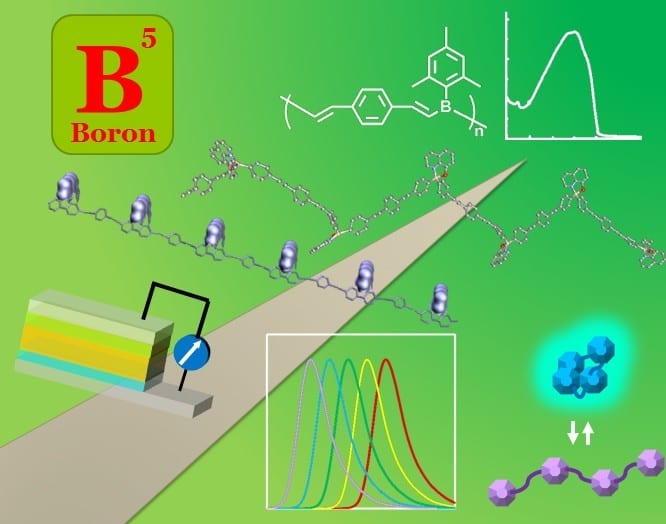Boron belongs to group 13 and has one electron less than carbon. In conjugated polymers, organoboron complexes work as electron acceptors. Accordingly, various unique properties can be observed originating from the electronic interaction with organoboron complexes in the polymers.
Yoshiki Chujo and Kazuo Tanaka (Kyoto University, Japan) now provide an overview of established and ongoing work in the field of organoboron-containing conjugated polymers. From their first report on tricoordinate boron-containing polymers, the intriguing properties of conjugated polymers using cyclodiborazane, boron quinolate, diketonate, and dipyrromethene, pyrazabole, and carborane are surveyed.
Not only by modulating the chemical structures of the ligand but also by combining the energy transfer involving organoboron complexes in the polymers, a variety of interesting optical properties can be realized: Bright emissions with sharp spectra, near-infrared fluorescence, aggregation-induced emission, and morphology-dependent optical properties. The fabrication of robust materials with an organic-inorganic hybrid is also accomplished. Furthermore, based on the electron deficiency of boron, efficient electron-carrier abilities of organoboron-containing polymers are demonstrated. Organoboron-containing polymers can work as efficient electron-transport layers in electroluminescent devices. Molecular designs and syntheses of functional polymers to receive synergetic effects with heteroatoms and conjugation system are described.
Written by the pioneer of conjugated boron-containing polymers, this work is of interest for a growing community of scientists that wants to explore the unusual properties of these types of materials.


















